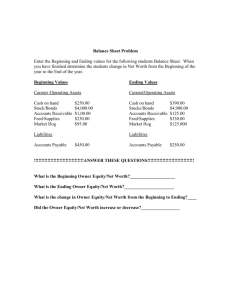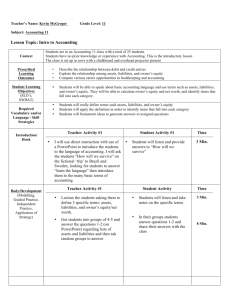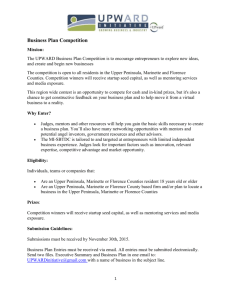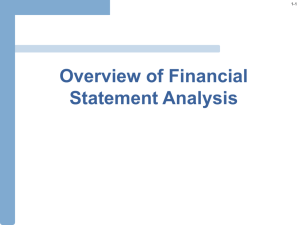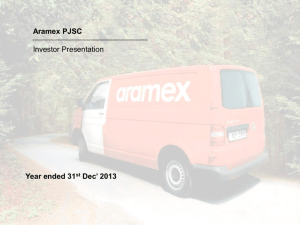ACCOUNTING TERMS Accounts receivable When goods and
advertisement
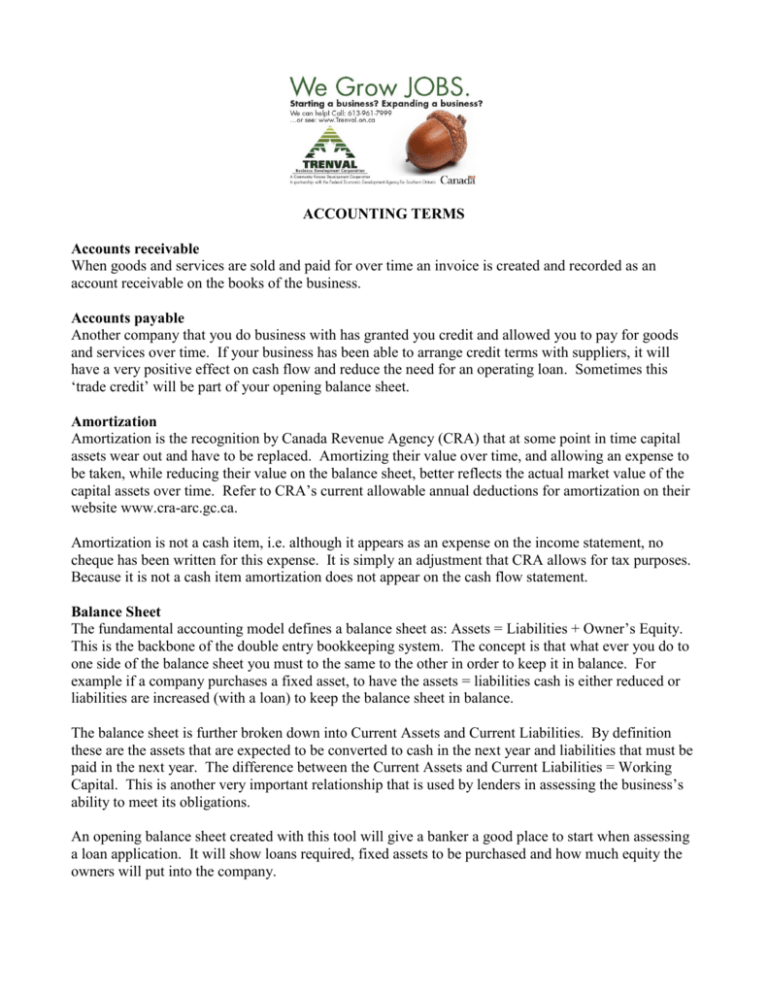
ACCOUNTING TERMS Accounts receivable When goods and services are sold and paid for over time an invoice is created and recorded as an account receivable on the books of the business. Accounts payable Another company that you do business with has granted you credit and allowed you to pay for goods and services over time. If your business has been able to arrange credit terms with suppliers, it will have a very positive effect on cash flow and reduce the need for an operating loan. Sometimes this ‘trade credit’ will be part of your opening balance sheet. Amortization Amortization is the recognition by Canada Revenue Agency (CRA) that at some point in time capital assets wear out and have to be replaced. Amortizing their value over time, and allowing an expense to be taken, while reducing their value on the balance sheet, better reflects the actual market value of the capital assets over time. Refer to CRA’s current allowable annual deductions for amortization on their website www.cra-arc.gc.ca. Amortization is not a cash item, i.e. although it appears as an expense on the income statement, no cheque has been written for this expense. It is simply an adjustment that CRA allows for tax purposes. Because it is not a cash item amortization does not appear on the cash flow statement. Balance Sheet The fundamental accounting model defines a balance sheet as: Assets = Liabilities + Owner’s Equity. This is the backbone of the double entry bookkeeping system. The concept is that what ever you do to one side of the balance sheet you must to the same to the other in order to keep it in balance. For example if a company purchases a fixed asset, to have the assets = liabilities cash is either reduced or liabilities are increased (with a loan) to keep the balance sheet in balance. The balance sheet is further broken down into Current Assets and Current Liabilities. By definition these are the assets that are expected to be converted to cash in the next year and liabilities that must be paid in the next year. The difference between the Current Assets and Current Liabilities = Working Capital. This is another very important relationship that is used by lenders in assessing the business’s ability to meet its obligations. An opening balance sheet created with this tool will give a banker a good place to start when assessing a loan application. It will show loans required, fixed assets to be purchased and how much equity the owners will put into the company. Cash Flow Statement A cash flow statement records the income when it is received. Bankers use the cash flow to determine the maximum size of an operating loan needed and when during the year it will be at it’s lowest. If the operating loan never revolves to zero there is a need for a larger capital injection in the business or larger term loans. The cash flow also determines if the loan payments can be made on time. Cost of Goods Sold Simply put, it is what the business has to pay for the goods it sells. In a manufacturing business this would include raw materials and the costs, including wages, used to manufacture the finished product. Cost of goods sold also includes the freight costs to get the product to the retail store or manufacturing plant. In a service business there will be no Cost of Goods Sold. Expenses Expenses are all other costs of doing business that are not part of cost of sales. Expenses vary as to season or simply have an annual billing date. For example, heating costs are higher in the winter than the summer unless your business is on equal billing. Accounting fees and taxes are usually only billed once or twice a year. Gross Profit/Gross Profit Margin Usually expressed as a ratio percentage, the Gross Profit Margin is calculated as follows: Sales CostofSales Sales 100= Gross Profit Margin The Gross Profit is simply the amount of money left to run the business, after goods for sale have been paid for. (See Cost of Goods Sold) The Gross Profit margin is one of the most useful ratios when analyzing a business. It can be compared to industry standards easily to see how well the business is doing. The Industry standards are available on the Internet through the Canadian Government Website – Strategis – Performance Plus. (See Glossary Introduction for more details). http://sme.ic.gc.ca/ Income Statement The income statement records a sale the moment it is made (cash sale) or the moment it is invoiced. If an invoice is created then it is added to the accounts receivable because payment is not expected for several days depending on the prior arrangements. In accounting terms the balance sheet and income statement are prepared on an accrual basis. The cash flow statement on the other hand is based on when payment is actually received. Inventory Raw materials – in a manufacturing business these are the materials needed by the business to produce the finished product. Finished goods – in a manufacturing and retail business these are the finished products that are sold to the end user. There is usually no inventory for a service business. Small items such as paper, ink cartridges etc. that are delivered to the client are usually paid for under supplies on the Income statement. Partners Equity While this is named Partners Equity in Partnership Agreement it can be changed to read, Shareholders equity for a Limited company or to Proprietor’s equity or simply Equity. In either case it is simply the amount of money the principles in the business have put into the business. Using the opening balance sheet one can determine the amount of Equity required by inputting all other lines and using the Equity line to balance the balance sheet. Sales Sales can either be cash or on account in which a customer will pay for the goods or services later. Sales are simply the total of all goods or services sold. Sales may vary from month to month depending on the season or major local events affecting the economy.


